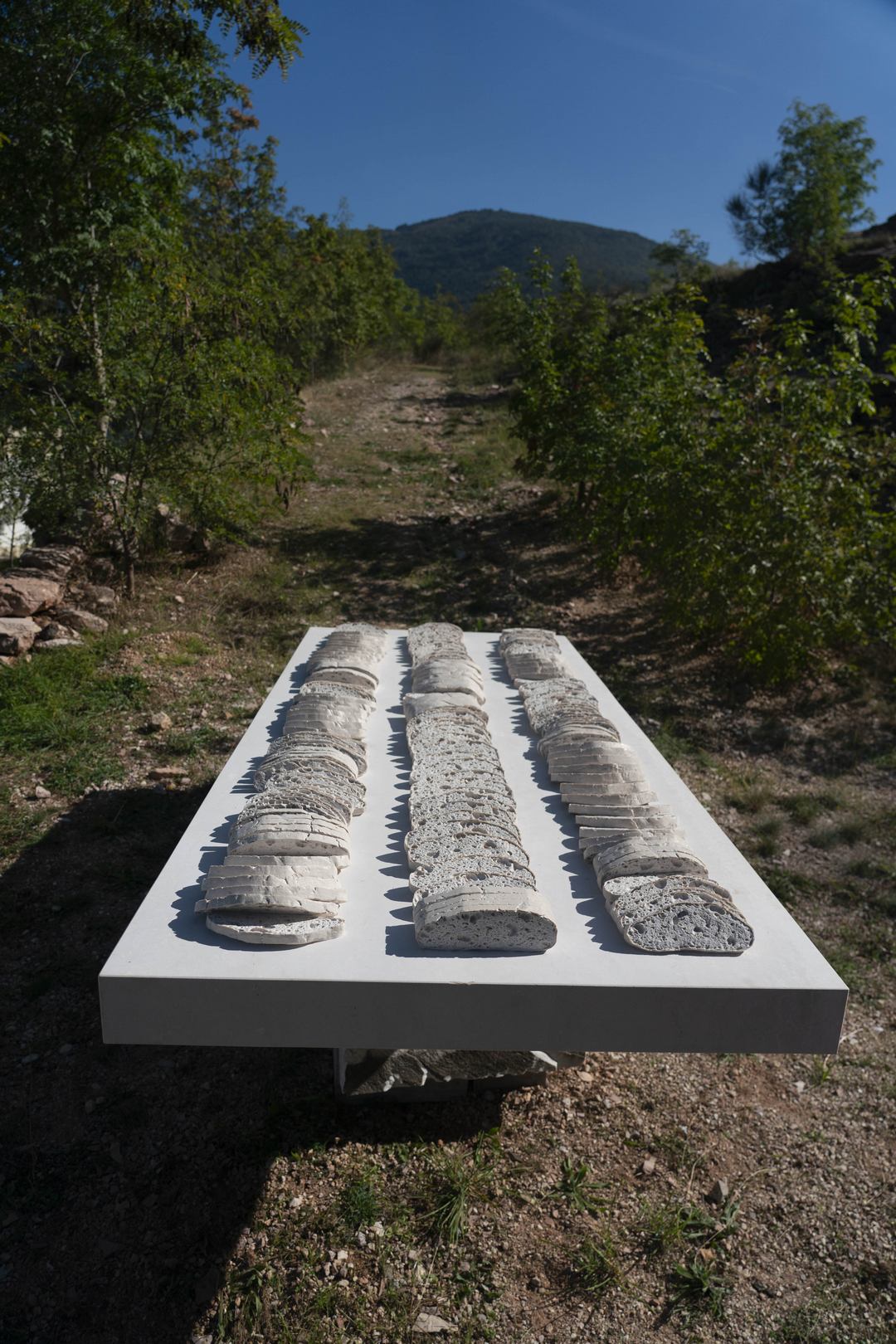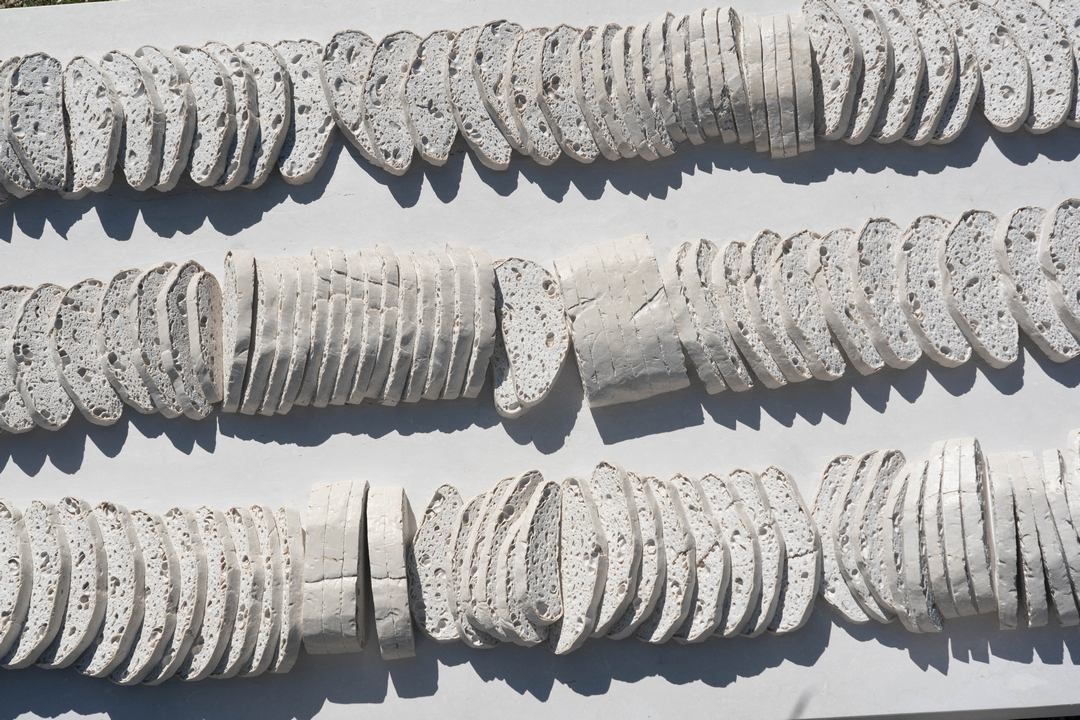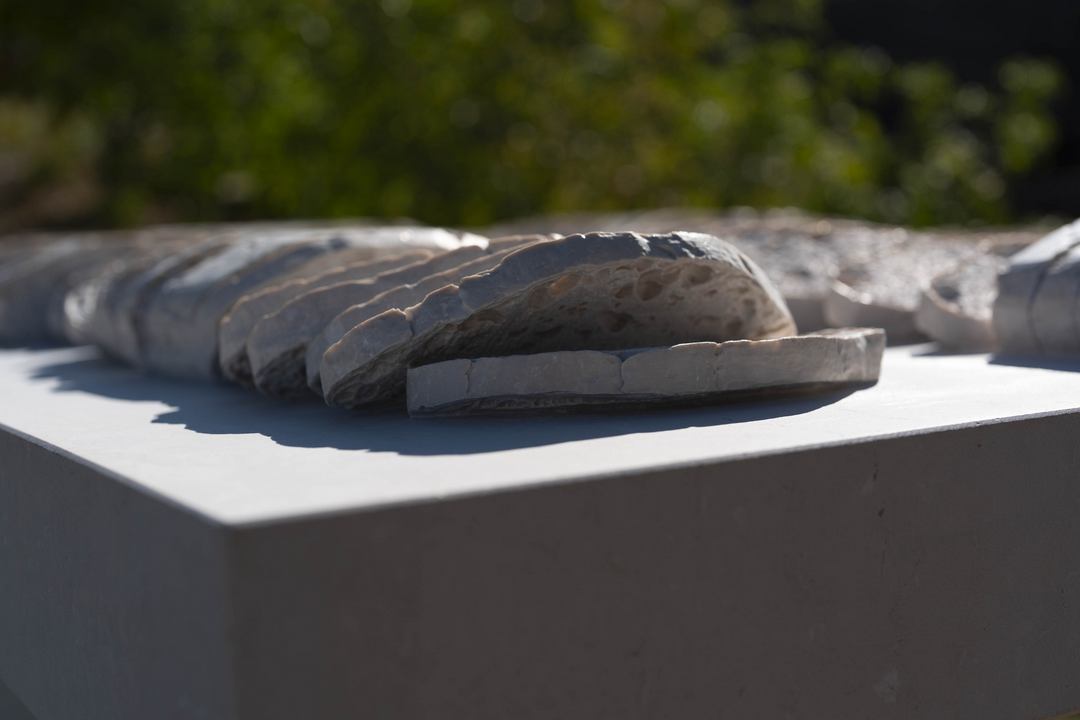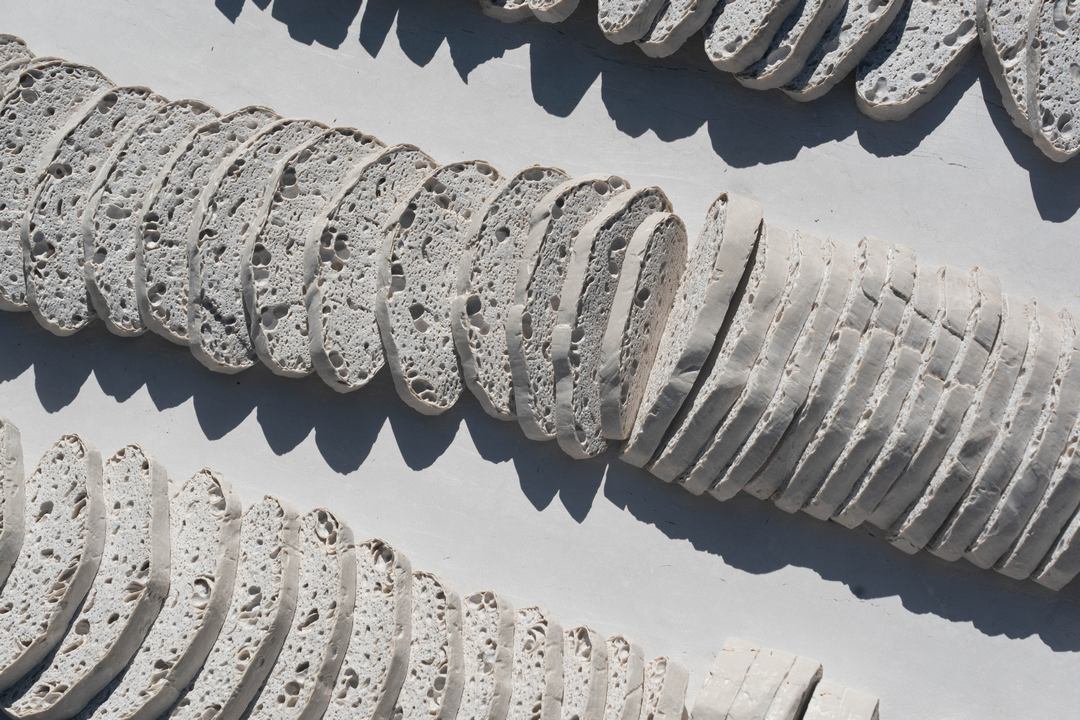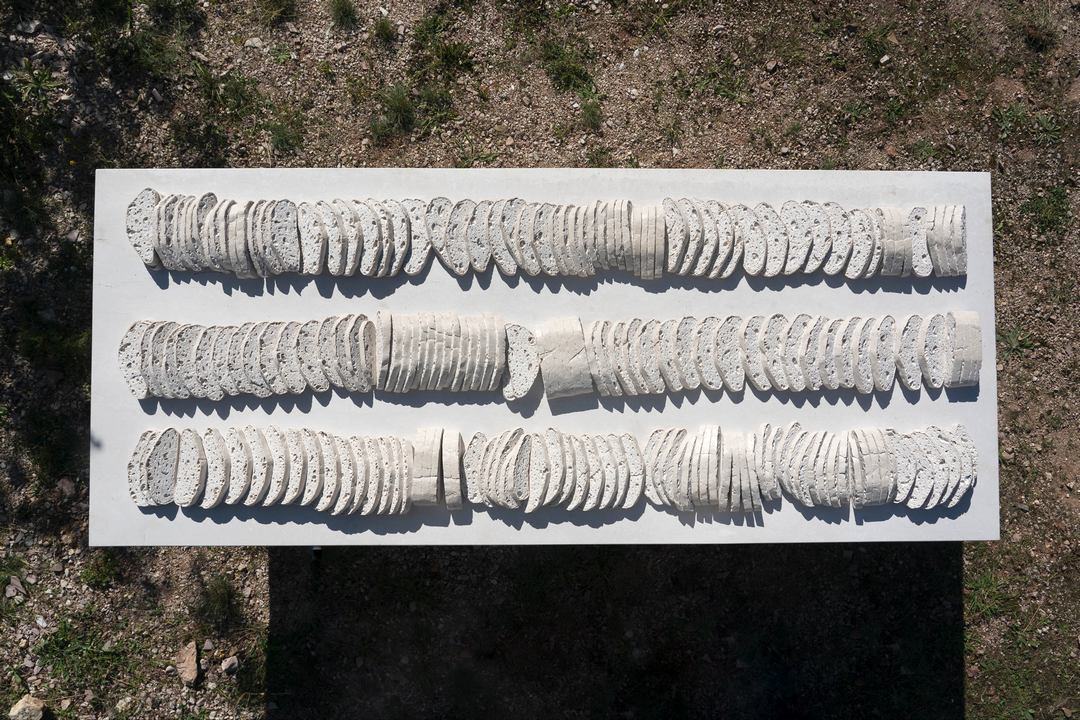La via del pane
The dream, a vision
It’s quite difficult, for an artist, to explain how an artwork takes shape from idea, design and inspiration. Many artists take the risk of dangerous climbing on slippery mirrors to conceal this difficulty, selling specious theories and unreliable stories as they were real.
On the other hand, an artwork is an event and its realization is often similar to magic, to something that happens in a dream. In fact, inspiration itself is similar to a vision and the artist feels the need to give to inspiration a physical body. Each artist with its own style and according to its own abilities; I am a sculptor and I know well how difficult it is to account for the transition from idea to shape. I know well how much effort, even physical, it is required, how much skill… there are no formulas or words to express this mutation from image to realization, maybe only a poet could describe it. Even if, in fact, it is not even necessary to describe it as I believe the power of art consists precisely in making the symbolic force of things accessible to everyone through intuition, things that, by the mere fact of existing, acquire a further meaning such as the possible manifestation of a truth.
In the specific case of "La Via del Pane", for example, while half asleep, I had a prolonged vision of a scene that lasted a very long instant. It was a kind of suffused hallucination, the kind of vision that catch you while falling asleep, suspended between vigil and sleep. How this vision became an artwork is difficult to explain. One thing is certain: in that state of abandonment which favors prophecy, I was able to see the work very similar to the shape it has now that I have realized it. Before, it was with no place nor time nor substance, and maybe that's why it entered so firmly into my spirit, without the bonds of its solidity. In one of those moments when inspiration is pure, I saw a multitude of people distributed in three long endless lines, turning their backs to me, proceeding undisturbed on their way, while they were transforming into as many slices of bread. Now that I have the finished artwork in front of my eyes, it seems to me that I was loyal to my vision: those thickly cut slices of bread are truly full of meaning to me, they are like men who are part of a sinuous “world-loaf”; perhaps they imply the hope that the world will become as good as bread? Who knows… No more famine, no hunger. Those slices of bread grouped together with the laid table represent an unequivocal message of equality and brotherhood rendered in poetic/artistic form.
……..zzzzz ……..zzzzz ……..zzzzz
Matteo Peducci
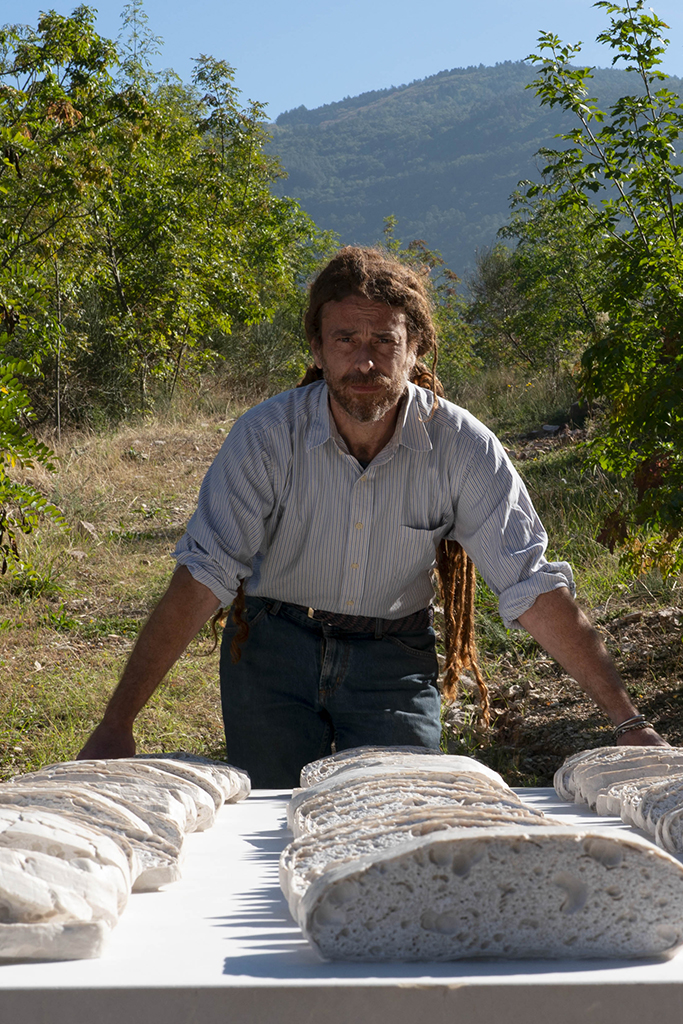
As slices of an heavy bread
In the description of the book “We are nature”, authored by Gianfranco Bologna and published by “Edizioni Ambiente”, we can read:
“The world will not end due to the lack of wonders, but due to the lack of wonder”. This quote is usually attributed to the British journalist and writer Gilbert Keith Chesterton, and is perfect to describe what is happening in this precise moment in history."
It is true that we live in the age of simultaneous and superficial events; an era without depth and without amazement. Now that we are used to be connected at a distance, we hardly feel the need for contact and presence anymore. It makes me think of a scene, repeated in infinite variations, of a movie or a TV series. Generally we see a lover who calls his love pretending to be far away, while in reality he calls closely, often a few steps away. The prank reaches is best in the moment of the embrace with the surprise that can be compared to a deaf wonder and to a joy made less intense by the habit of distance. In a game of exchanges between far and near, that are now confused and almost interchangeable, from the nefarious ubiquity induced by technology. To say “digital has made the distant present” no longer sounds like a metaphor, but like an acknowledgment. A real hug has lost substance replaced by the encounter through a screen. Relationships have become less intense, even if, at least in part, they have maintained the ability to produce surprise and happiness, implicit in every reunion, without prejudice to the natural need for a real encounter. The deterioration of interpersonal relationships and the predominance of the artificial over the natural have produced a detachment and increasingly manifest distrust of nature and its power, even sublime. We have replaced presence with its surrogate screen, and we have enhanced reality with digital special effects. Furthermore, although the speed of means of transport cannot keep up with digital ubiquity, it has managed to adapt, gaining speed, to the point that today almost no one looks out the window anymore because the landscape is an indistinct stream. In the past, increasingly hectic life had found a brake in “slow food”, who knows if “slow trips” will be back in auge tomorrow?
By now we can travel incredible distances quickly, and someone even started to book trips to Mars; wonder is at hand and no one enjoys a sunset or a panorama anymore. People go all over the world, and travel has become tiring and superficial, but very fashionable, perhaps because no one has the time or inclination to look out the window of their home. Also for this reason nature is photographed, filmed, reproduced and advertised in various ways, by now too well known and has lost all its mystery.
Travel is no longer a high form of knowledge and discovery but only a forced transfer of enormous masses of people from one point of the globe to another. No journey is considered an initiation rite anymore. For migrants it can be a journey of hope, in which the unknown and the unexpected are terrible; alternatively, the trip is an all-inclusive holiday for indifferent and distracted people, who feel a substitute pleasure and amazement, without real encounters and without wonder…
And speaking of wonder, it’s easy to think of Aristotle, who observed, in the first book of the Metaphysics:
"It was through wonder that men in the past began to philosophize, as it is for this same reason that they continue to philosophize even now."
This brief proposition has been used as a universal key capable of opening infinite doors, the fact remains that the wonder to which the philosopher refers is not exactly the Latin one (the term in fact comes from mirabilis: marvelous and extraordinary things), in fact it has no to do with things. As Emanuele Severino explains well in one of his "WONDERFUL" lectures: Aristotle's wonder is (the) "thauma", and even if the term is commonly translated as "wonder", it does not look anything like the Latin meaning, because in its original meaning it implies "terror" and "anguished amazement".
So if it is true that wonder is the principle of philosophizing the feelings produced by wonderful things, to become tools of knowledge they must be able to produce not only pleasure but also terror and distressing amazement.
Starting from this assumption, it would be appropriate to reach the point of affirming that wonder, in its double meaning, is not only the principle of philosophizing but also the principle of making art, not only beautiful but also terrible, as it has always been.
Having said this, it would be useful for contemporary human beings, at the mercy of a forced detachment from reality, to immerse themselves again in it, venturing into that real world which will thus return to being both terrible and wonderful; favoring an encounter with natural reality and with the other, made up of accidents and clashes but also of seduction and depth and beauty.
In this sense the stone is exemplary. If it occurs the encounter with the stone, not always necessary, it can be established in detachment or in confrontation but also in seduction. Perhaps the first sculptures were made of mud and only later of stone, but let's leave this discussion suspended and talk about marble (which is also a stone) and the sculpture, made with this material, by Affiliati di Matteo Peducci.
His sculpture is titled: La via del pane.
The fact that the artist has created an enormous table set, with numerous slices of bread on it, seems to me that is responding to an elementary and universal message at the same time. In the artwork the aesthetic aspect (in the sense of artistic) is closely combined with the traditional techniques and methods that are operating on a pulsating and significant material; weight and resistance are its natural sources and have been modified by the process of sedimentation; now it's up to the artist to distort them and direct them to his own ends through gestures and techniques closely linked to the tradition, but not less contemporary. Then, through the imagination, the artwork will acquire its magic capable of making light “the heavy” and soft “the hard”, in immobility.
In this work the symbolic value of the table laden with bread, with its humanitarian references to charity, rises above the individual religious faiths; in an apodictic message of universal brotherhood which is a prelude to overcoming hunger and inequality. All this through a persistence of traditional art through which he decides, with an almost anachronistic gesture, to face the stubborn hardness of stone, a heavy and refractory material, difficult to manage but capable of restoring the power of the intention of the one who faces it to change it, with strength but also with respect.
From these premises it would be natural to imagine a non-rhetorical slogan that reads: "bread for all" but also "art for all"; aware that the message implicit in the artwork is secondary to the poetic force of art, which is always capable of producing not only awareness but also a marvel that goes beyond words and concepts. That marvel feeds art more than philosophy, while trying to make sense of our being in the world.
Therefore the wonder,”thauma”, inspires art and becomes the fruit of art, in a virtuous circle. We should reflect on the reasons why a sculptor still today feels the need to deal with an ancient and powerful material such as stone, given that he would have a thousand other ways to communicate and make art and unleash emotions that have been anesthetized for too long, to produce true wonder.
We will understand that stone and man see their indissoluble bond form in the antithesis, for this reason, by using stone, the sculptor can feed his bond with the earth and its depths from which spring the wonders that always hold opposites together: the stone bonded to man and earth bonded to heaven.
Today is not easy to perceive art as a source of wonder, as it implies being seduced, not only by a possible beauty that is a source of amazement, but, above all, by that wonder inspired by the "terror and distressing amazement" which are an integral part of our experience and, therefore, of our existence.
An artwork like this is not pacifying and it shouldn't be, because art in itself is not only an object of contemplation, but a battleground in which knowledge is formed. All those slices of heavy and light bread are stone, the result of a stratification of earth as matter and of time. Before man, nature acted on the stone, artistically in its own way. It is man's ability to mutate matter that strikes us, when the sculptor intentionally modifies a shape, creating a new one, he magically returns to the viewer an illusion that carries within himself the seed of wonder. This is the profound warning of art: it teaches us to marvel, it makes us understand both the reality of illusion and the illusion of reality, both the one perceived in dreams and nightmares, so much so that in the continuous reconstitution of these polarities the art finds the strength to change the world.
Paolo Nardon

